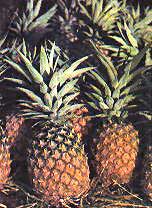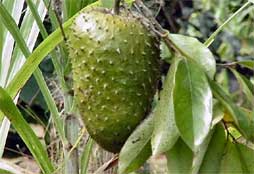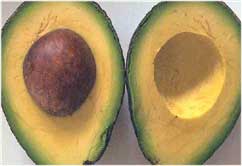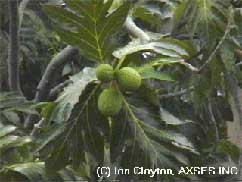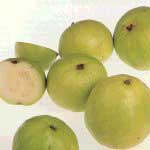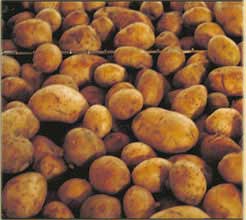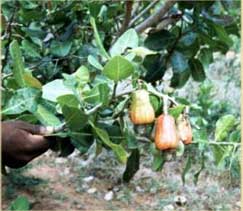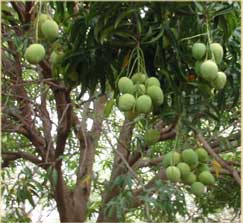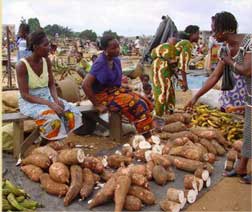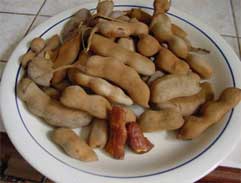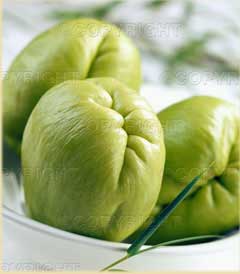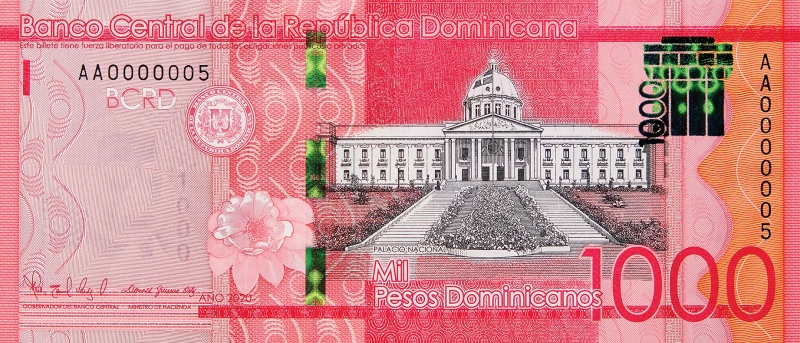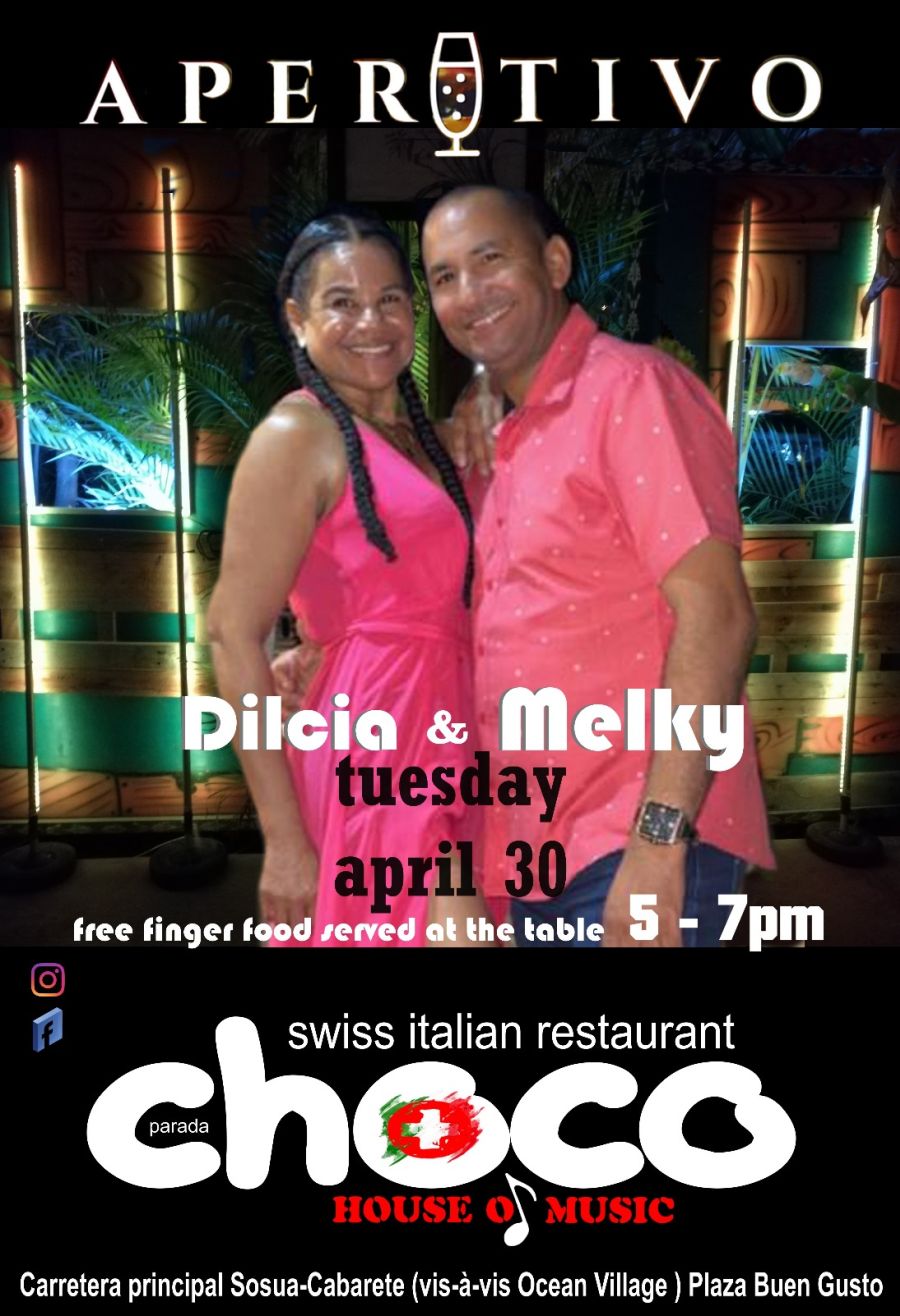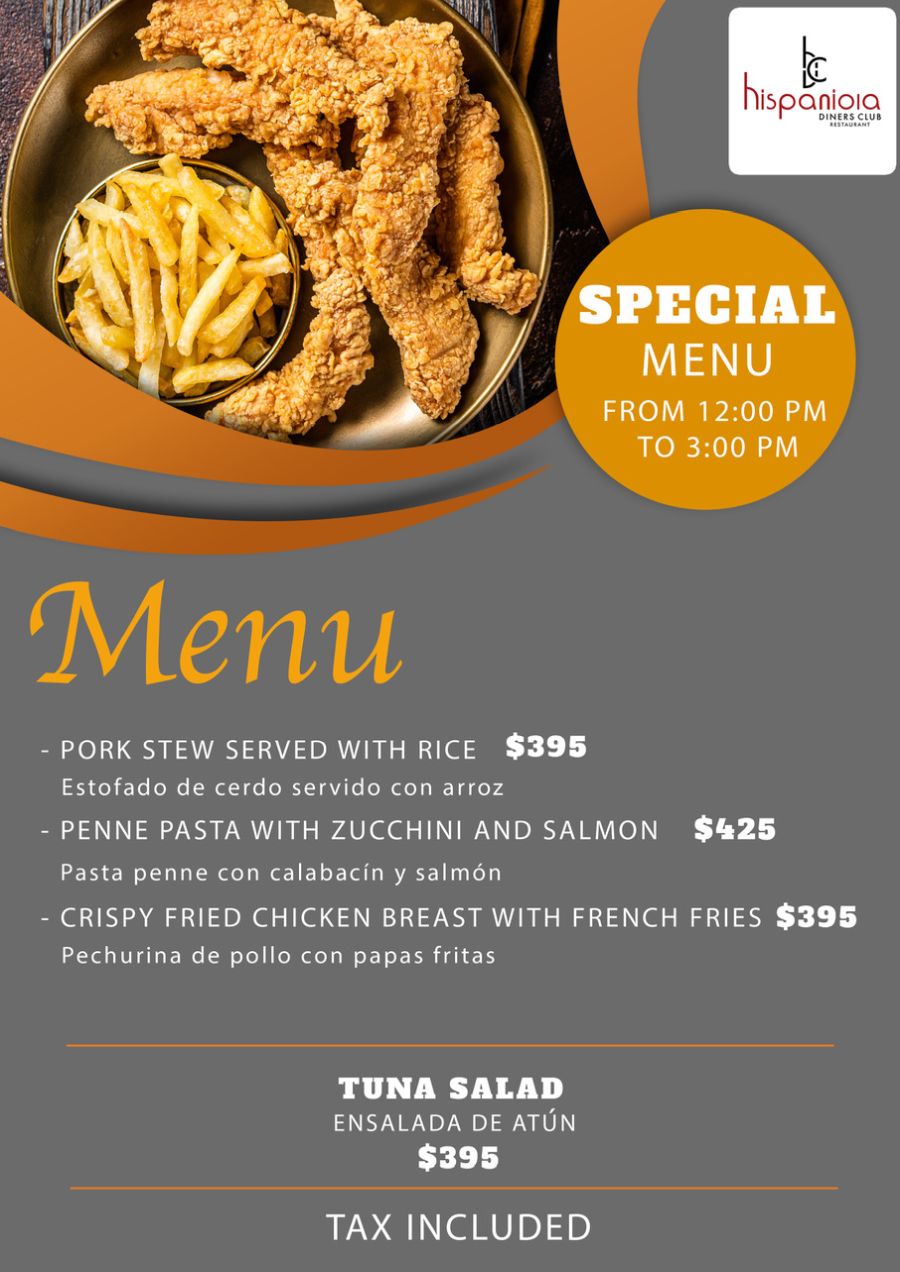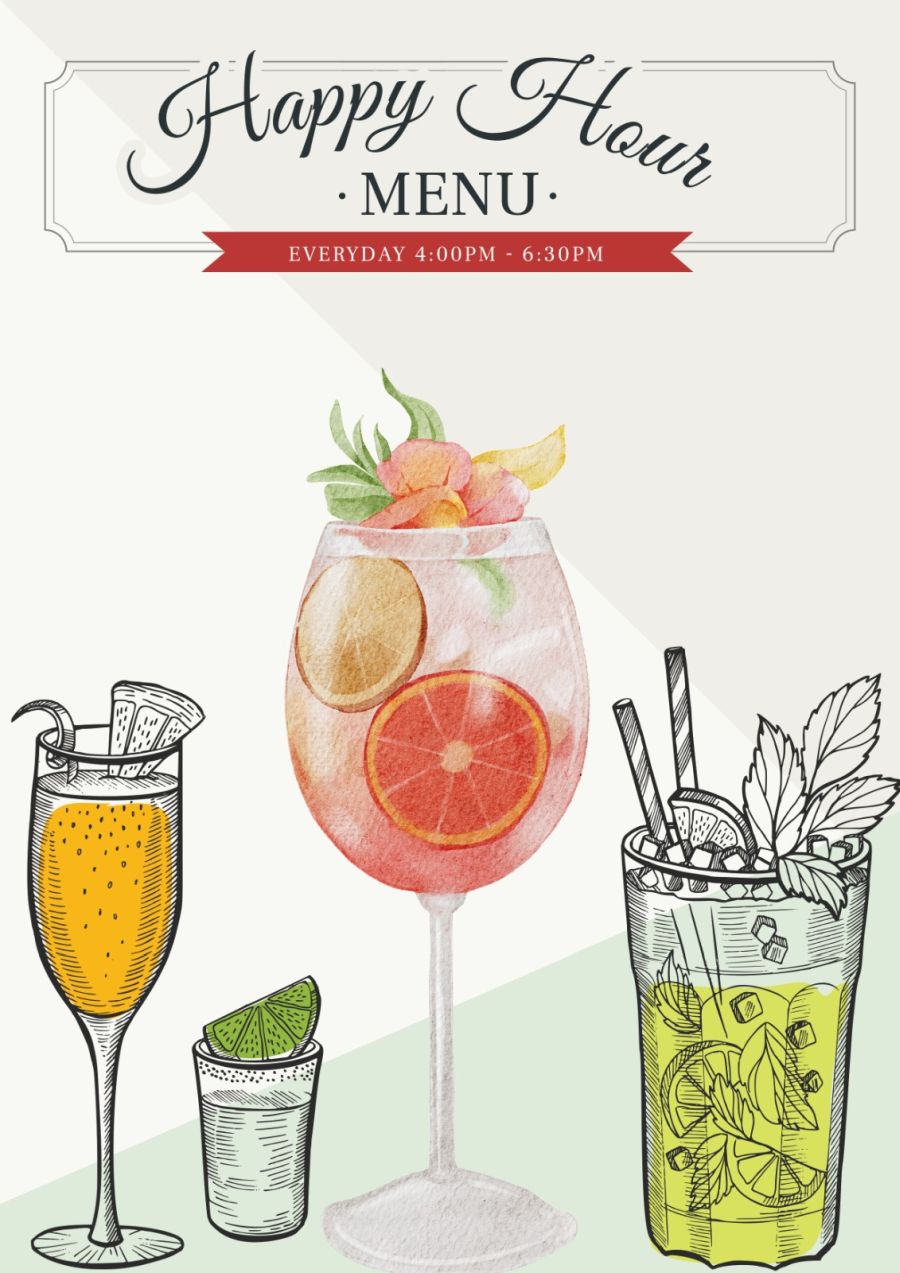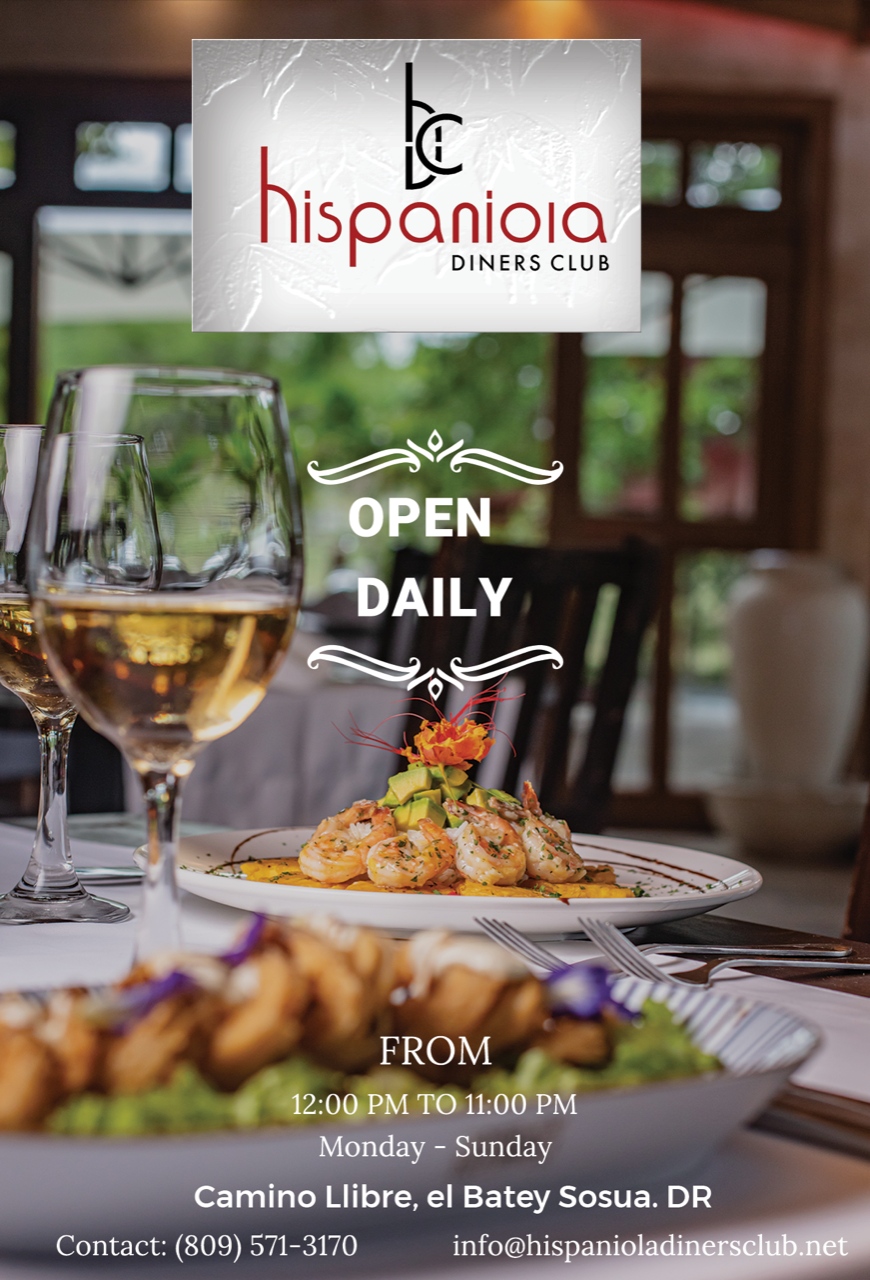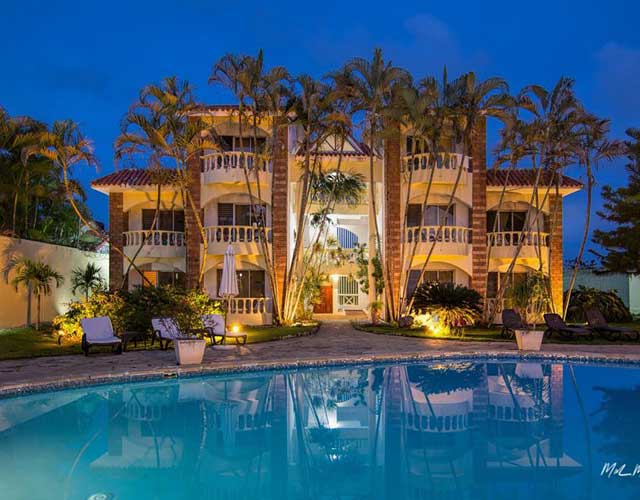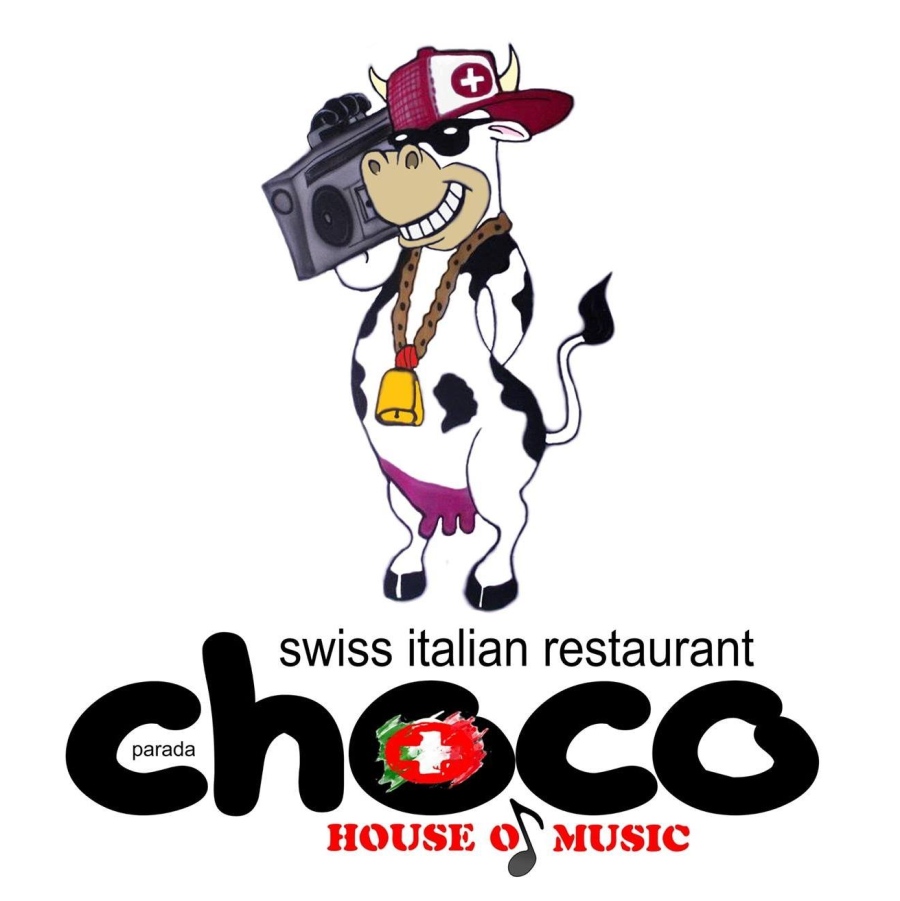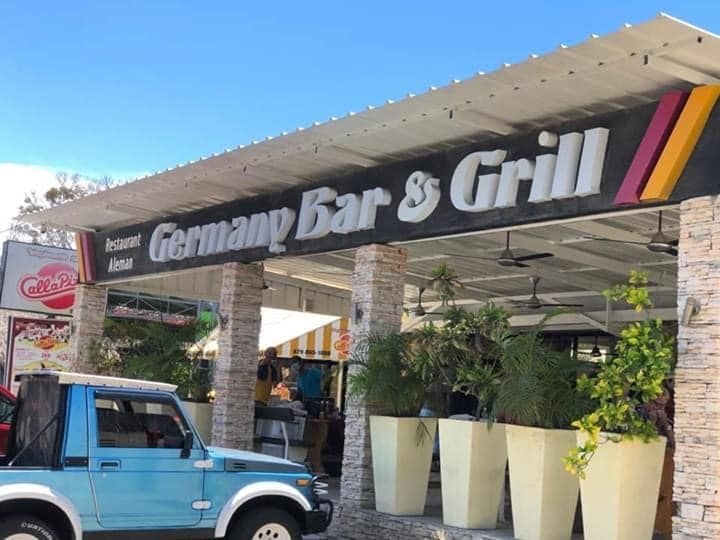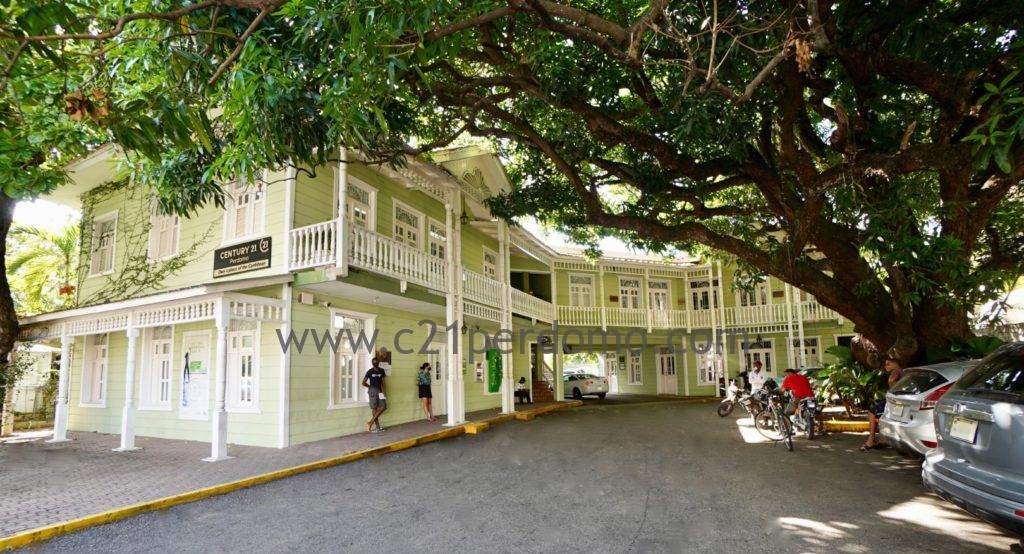
What grows and flourishes is always fascinating
Fat peel
All the fruits described are insect resisting and usually have a fat peel and insect repulsive oils.
Just peel the fruit or wash it and you can eat it.
You don't have to be afraid that you consume insects on eating the fruit.
The pineapple or piña
Riding from Santiago to Santo Domingo, you can see extensive fields with just pineapples.
They taste sweeter here then the exported ones, because here they can ripen completely in the sun.
The pineapple belongs to the Bromelias family.
Annone or guanábanaa
The internal flesh of this delicious tropical fruit is white with soft cottony strands that contain many seeds.
The fruit produces a fat, fresh and soft aromatic juice.
The juice is usually mixed with other fruit juices.
Avocado or aquacate
Is it a fruit or a vegetable?
Nowadays Avocado is used much in the western kitchen too.
The soft taste and the property to enrich the taste of other dishes have made the Avocado very popular.
What's crab without Avocado?
In a salad with some onions and lemon juice?
They also use it in hair lotions, shampoo and skin cream.
Bananas, Guineo and Platano's
Bananas or Guineos are ready to eat, you have to cook or bake platano's before you can eat them.
Like a coconut, a banana is an important part of the daily food in tropical areas, and so it is in the Dominican Republic.
The banana is foreign in the Dominican Republic; Columbus imported them from the Canary Islands.
The banana is not a tree but a big plant with giant leaves.
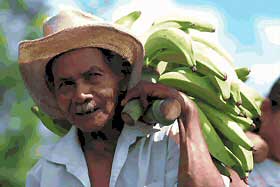
The plant grows fast and in 12 to 14 months a banana plant carries fruits.
The yields are high, 30 to 45 kg of bananas each plant.
The banana bunches are harvested for export while still green.
They are shipped at 14 degrees Centigrade and ripened on their place of destination.
There is a great variety of bananas, from small to big, from yellow to almost red.
The smaller bananas usually taste better then the bigger ones, they're sweeter too.
The Platano or bake banana is eaten as you eat a potato.
Cooked, baked or fried.
Bananas are nourishing, but don't contain much protein, vitamins and minerals.
Bread of fruit or Pan de Fruta
This giant jungle tree is also foreign; Captain Bligh imported the tree from Tahiti to Haiti in 1773 (You can see this in the movie 'Mutiny on the Bounty').
The tree has enormous leaves and carries green fruits with a hard structured skin.
The fruit is peeled first and then fried in slices. It's like a normal potato but it's sweeter.
The fruit is rich in vitamins A, B and C.
One of the varieties has a big brown stone inside and you can roast them like a sweet chestnut.
Guave or Guayaba
These plants can be seen much in the wild.
The fruit grows in brunches, has a yellow colour and soft pink internal flesh with a very strong perfume-like odour.
The fruit is used often to improve taste and flavour.
The fruit is rich in vitamin C, Iron and Calcium.
Coffee or Cafe
You come across these man sized coffee plants in the higher parts of the island.
It takes nine months to grow from a little flower until the berries have ripened and can be harvested.
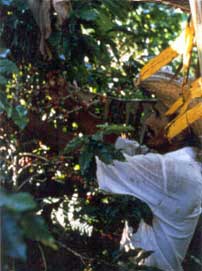
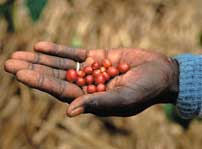
The red berries are removed from the branches and the harvest will be about 2000 kilo per hectare.
The berries will be stripped of their red fruit flesh.
They will be fermented and afterwards washed and dried.
The green coffee is then ready for export.
The beans are ready to be roasted by the coffee importers .
If a Dominican family invites you for a cup of coffee, it can happen that they offer you self roasted-coffee.
Many farmer families roast their coffee themselves.
They offer the coffee very strong in a small cup with a bit of cinnamon or nutmeg.
Cacao
The name cacao is derived from the Indians who had already named it cacao.
The Spaniards rightly estimated the value of this delicacy and soon started cultivating this tree.
Cacao grows straight and fairly tall.
The brown fruits, as big as your fist, hang down in between the leaves and branches.
The flowers of the cacao tree bloom at night and are pollinated mainly by bats.
The fruits then ripen in 5-7 months.
If you cut the fruit open, you'll see five rows of white kernels, or nuts, embedded in a white pulp.
These nuts are removed and fermented for 3-5 days to get rid of the pulp.
After this the beans are dried slowly, during which the beans oxidise and turn a dark brown colour.
It takes around 20 fruits to produce one kilo of dried beans.
But before you can use them the beans need to be roasted for 30 minutes at a temperature of 90-140 degrees Celsius, before being crushed and ground.
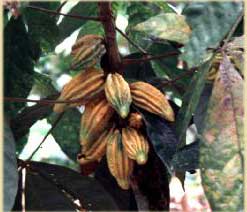
Cacao
The resulting cacao powder can then be used to make chocolate.
/
Cacao powder can also be pressed to separate the cacao butter from the cacao.
Cacao butter is often used in cosmetics such as sun-tanning products or skin cream.
Potato or papa
The Indians grew many types of potatoes.
Columbus first introduced the potato to Europe, but it took a few centuries before potatoes became the staple diet of the people.
In the Dominican Republic the sweet potato is the most popular variety, and is called 'batata'
The Cashew or Cajuil
This is a tree that produces very large fruits.
An extra piece (containing the 'nut') grows at the end of the fruit (the 'apple').
The nut is obtained by roasting this kidney-shaped growth.
The fruit itself is inedible.
The nut has to be roasted otherwise it's poisonous
The coconut or coco
The coconut is undoubtedly the best-known fruit on the island.
The coconut palm tree was introduced by the Spaniards from Africa and did not originally grow on the island.
This large tree, with its distinctive crown of palm leaves, grows all over the island,
even in the coastal regions where the soil can be very salty.
The only areas where it cannot grow are the mountains and higher regions of the island.
Here you only find deciduous and coniferous trees.
The palm leaves are still used as roofing material, especially in the interior of the country.
The nuts ripen all year round.
The fresh and absolutely germ-free coco milk is a tasty thirst quencher.
But coconut is also used to prepare fish, meat and chicken.
Just add a little rum and you'll get the Coco Loco.
It is also an important ingredient in your Piña Colada.
Coconut is used in many dishes as well as in chocolate bars such as 'Bounty'.
The coconut has a thick green skin, which is about an inch thick.
This is necessary because when the coco is ripe it falls off the tree - and it's quite a distance to the ground!
Without this protective skin it would be smashed to pieces.
Palm trees provide good shadow from the hot sun, but it's dangerous to sit directly underneath, as you may be hit on the head by falling coconuts.
In the Netherlands we only see the exported brown hairy coconuts; they are stripped of their skin to save space and change to a brown colour during transport.
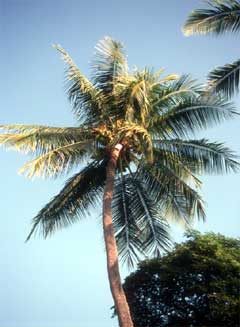
De kokos boom
It takes 12-14 months for the fruit to ripen.
After six months the fruit is fully grown, but the pulp still has to grow inside.
Unripe nuts don't have any pulp inside, they are just filled with a tasteless watery liquid.
On the other hand, ripe nuts contain an inch-thick layer of solid pulp and a sweet oil-like liquid.
Coconuts are exported by the Dominican Republic.
Farmers plant the trees with a distance of eight metres in between.
The trees produce 30-50 nuts a year.
Per hectare this results in a crop of 8000 coconuts a year.
Lemoncillo
These are green-brown fruits around the size of a hazelnut, growing in brunches.
They taste a bit like lychees and lemons and the inside is fairly soft and slippery.
Lemoncillo has a hard stone, and the skin is also hard but can easily be removed.
The fruit is usually sold at the beach - the kids love it!
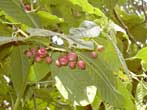
Lemoncillo
Mango
This popular fruit grows on a tall tree with a big crown of leaves and branches.
If you break the leaves they smell like turpentine.
The tree bears a lot of fruit every year, which grows to become as big as your fist.
The colour varies from yellow to red.
The ripe fruit is very sweet and fragrant.
Mangos are also exported by the Dominican Republic.
Maniok or Yuca
The yucca is a perennial plant that grows long prickly roots into the ground.
These roots or tubers contain large quantities of starch and minerals.
You prepare a yucca the same way you would a potato, and they are eaten boiled or fried.
For the Indians the yucca was the main source of nutrition.
They made a kind of yucca pancake that could be stored for a long time.
Tiny yucca slices baked in garlic butter are a real delicacy.
Palmheart or palmitos
At the top of the palm tree, especially the King's Palm, white string-like leaves grow in between the coconuts.
These leaves can be used in a salad together with some nuts and mushrooms.
It looks a bit like white asparagus or rapolla (a finely sliced white cabbage that Dominicans eat as a vegetable).
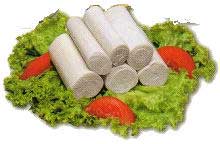
Palmhart of palmitos
Papaya or lechosa
This is a fragile fast-growing tree that needs a lot of water.
It has a crown of big leaves and produces oval-shaped fruits that hang from the trunk of the tree.
When the fruits are ripe they are a light yellow colour with an orange-coloured pulp inside.
Once a papaya is ripe it has to be eaten quickly.
After a few days it will start to turn black and smell bad.
But when they are fresh and ripe they taste delicious with a little lemon and sugar.
The food industry often uses the juice from the skin as a flavouring.
In America they use it in beer as a stabiliser.
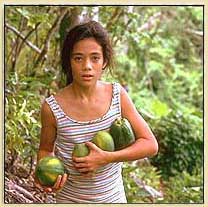
Papaya of lechosa
Passion fruit or Chinola
This is a climbing plant with shiny egg-shaped green fruits that turn yellow when they are ripe.
When you cut the fruit open you see a yellow to reddish pulp that is full of black pips.
This fragrant and delicious-tasting pulp can be eaten on its own or mixed into any kind of drink.
It's the nectar in many cocktails.
These days chinola fruit juice is often mixed with other juices and exported to Europe and America.
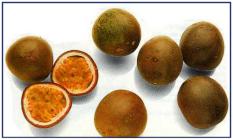
Passievrucht of Chinola
Tamarinde or Tamarindo
This tree originates from the African jungle.
The somewhat dirty-looking brown fruit is made into a juice by adding lots of sugar.
The pips are then removed and the fruit pressed into blocks.
This is the way they are sold in the shops.
Eaten pure it works as a laxative.
Tayota
Tayota is a hard green and hairy bean-shaped liana fruit with a white pulp inside.
It is used a lot in the local kitchens as a seasoning for fish or meat dishes.
The fruit can also be cut into slices and soaked in sugar water overnight.
The next day you have a sweet fragrant juice that children are crazy about.
Beach grapes or Uva de playa
You'll find these shady trees right along the beach.
Their big, red coloured leather-like leaves give a lot of shadow to many beach visitors.
This type of tree can be found near the 'Heineken Hoek' bar at Sosúa beach.
This freakish-looking tree produces bunches of green berries that turn a black-blue colour when ripe.
But tourists won't often see these berries on the tree because they are very popular among the locals.
As soon as they are ripe, they'll be harvested immediately.
The berries taste a bit sour and are used in meat dishes.
The perfume industry also incorporates these berries into its products.
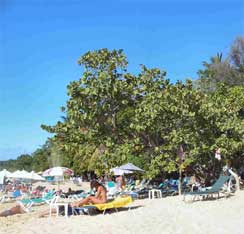
Strand druiven of Uva de playa
Zapote
This brown jungle fruit is as big as a duck's egg, has a strong skin and produces a fresh fruit juice.
When cut open they look like over-ripe bilberries and have a pungent odour.
In Central America this tree produces latex, the raw material for chewing gum.
The trunk of the tree is carved every 2-3 years to let the latex seep out, which is then collected in beakers.
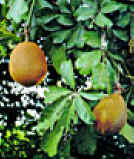
Zapote
Sugar cane or Caña de Azucar
If you look out of the window of the aeroplane next time you visit the island, you'll see the immense fields of sugar cane.
The Spaniards first imported this plant from the Canary Islands.
At that time it was called the 'sweet gold'.
Sugar beet was still unknown in Europe, and they depended entirely on sugar cane.
During the first few hundred years sugar fetched very good prices.
The plantation owners became incredibly rich.
But this monoculture also caused a lot of damage.
First there were the millions of black slaves imported from Africa who were brought to America to work in dreadful conditions on the plantations.
But complete jungles were destroyed in order to make way for the plantations.
It was pure deforestation in order to benefit this monoculture.
During the harvest season you can see thousands of Haitian workers using machetes to chop down the sugar cane.
This is a period when even the poorest can earn some money.
The sugar cane is immediately transported to the sugar processing factory.
Once the sugar cane has been cut it can't be left on the land too long, otherwise the sugar percentage drops.
The sugar percentage is generally around 12-15%.
But sugar beet has a much higher sugar percentage, around 35%.
The sugar is also used to make a variety of alcoholic beverages, of which rum (Brugal, Barcelo and Jimenez) is the most well known.
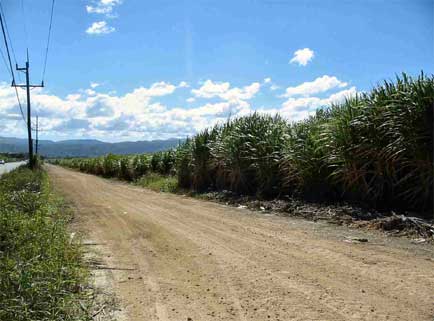
Sugar cane at Montellano
I love Sosúa




